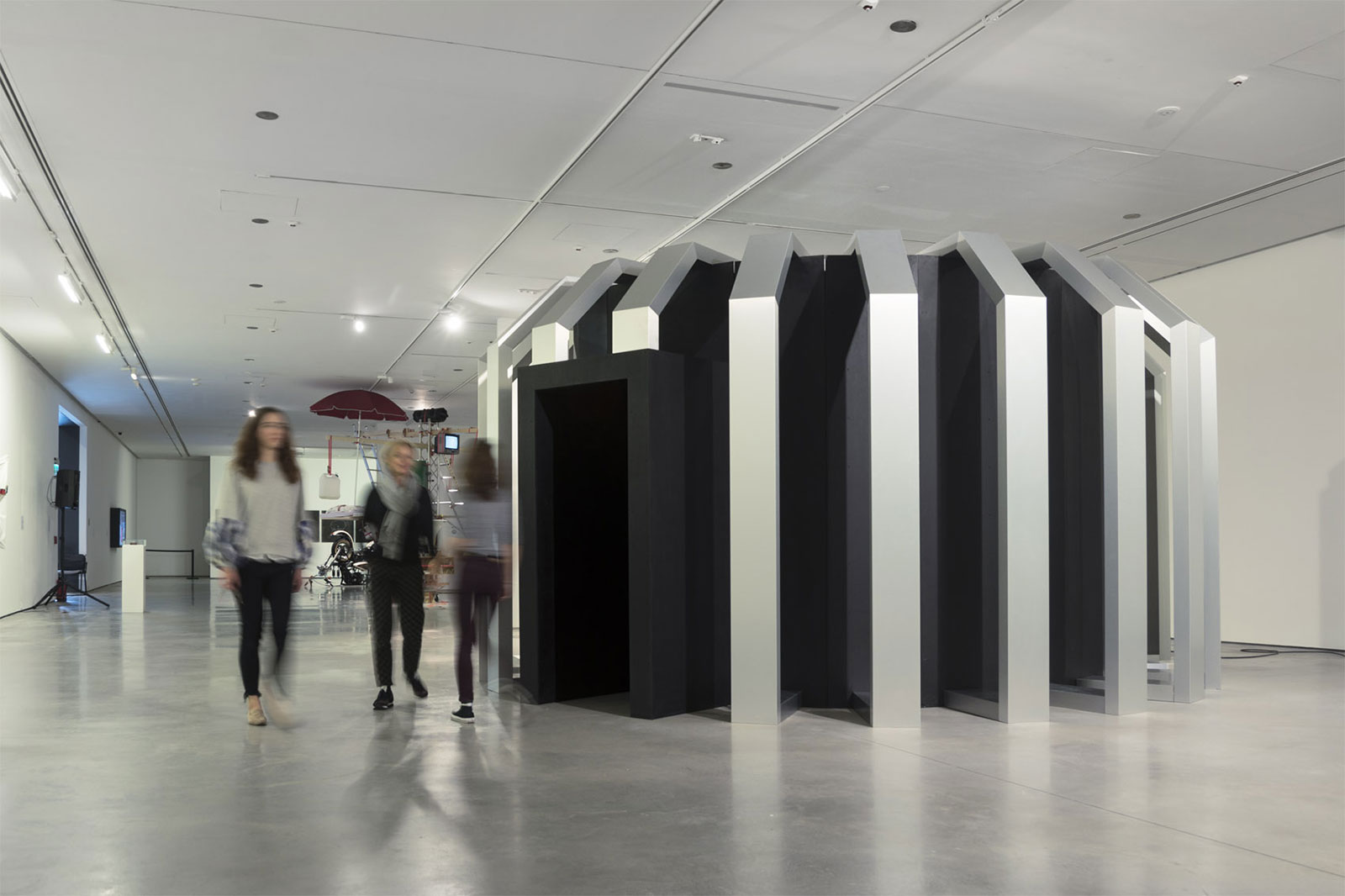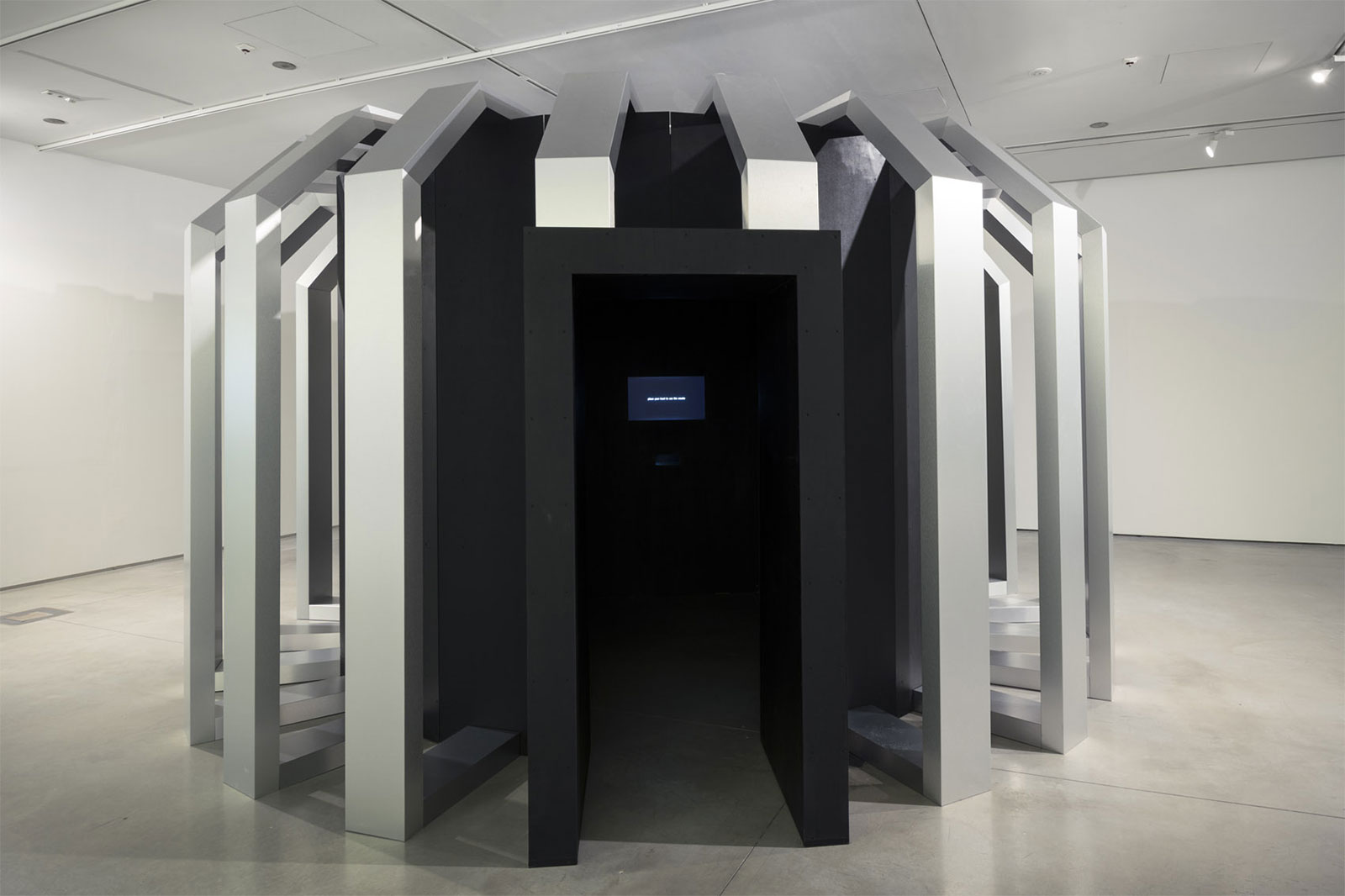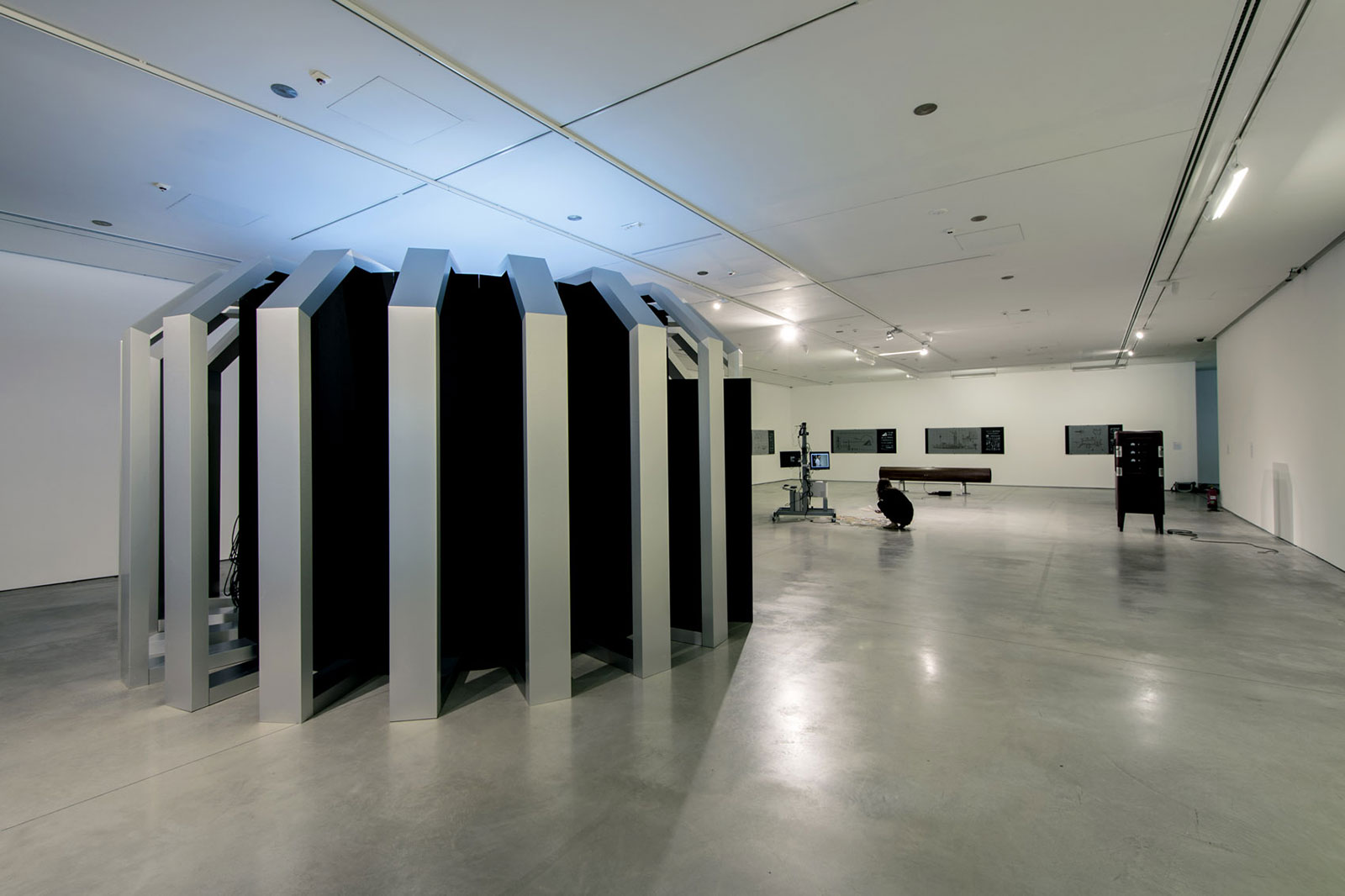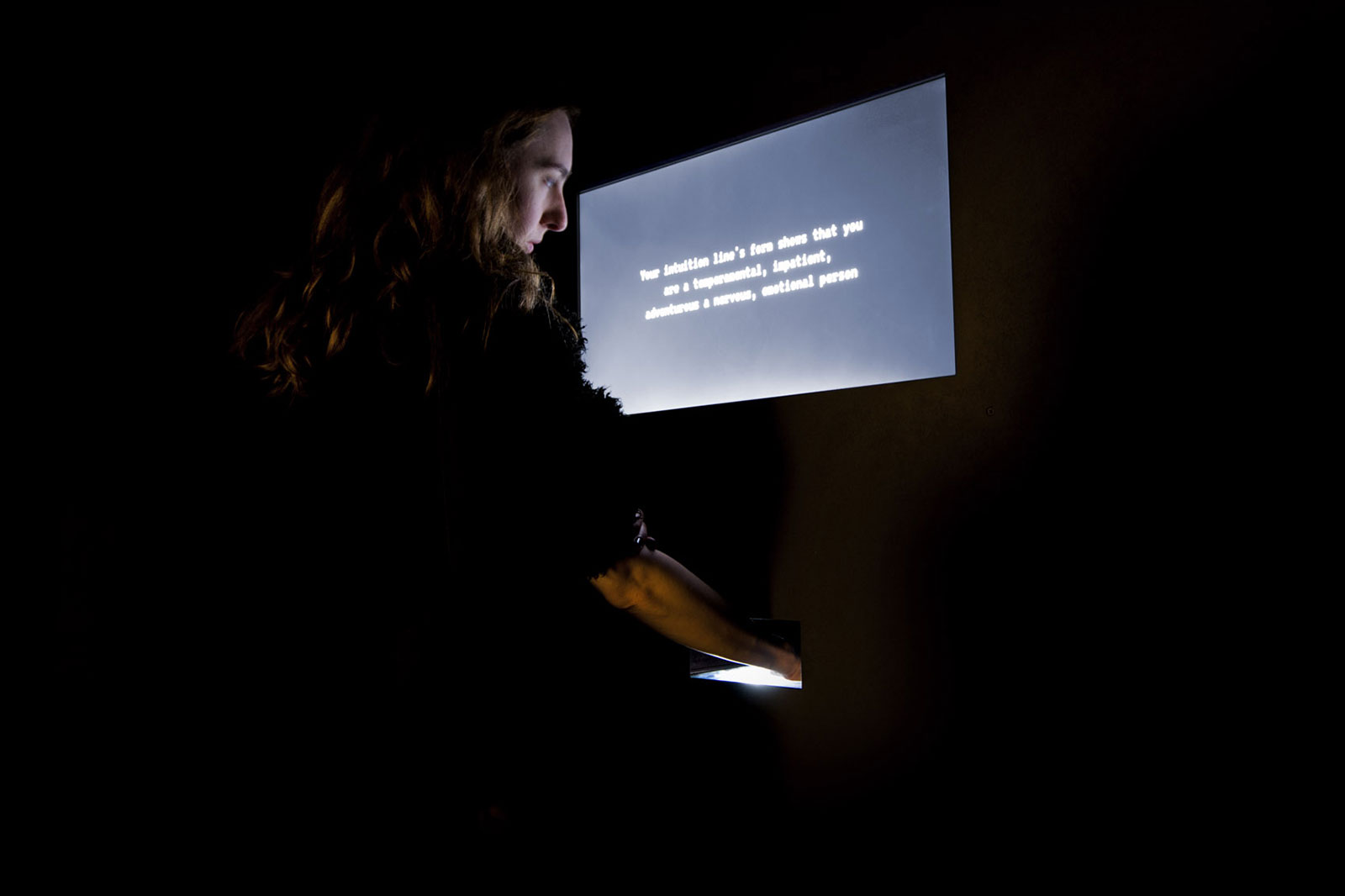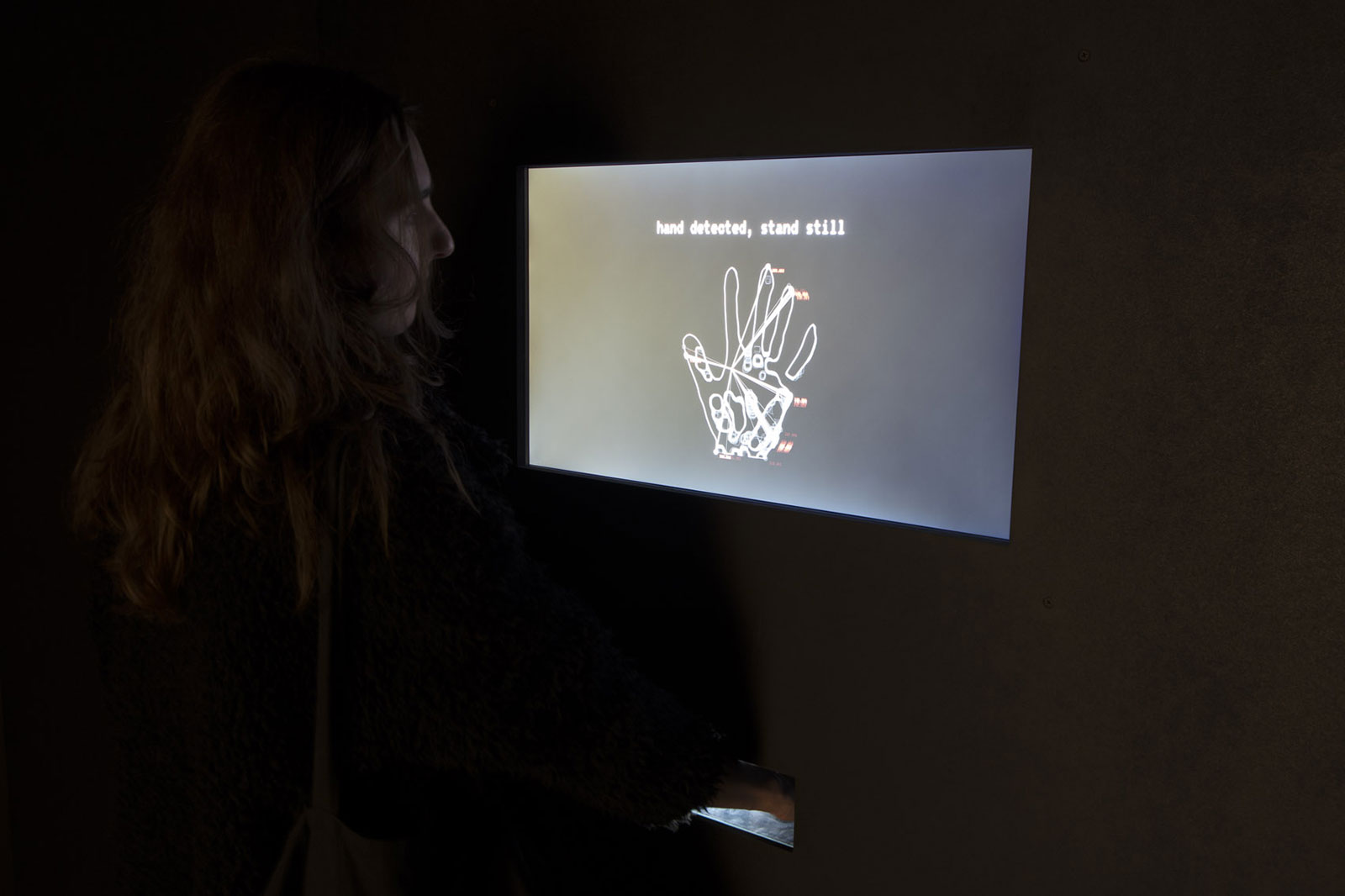
Oracle / MOCAK Museum of Contemporary Art in Krakow / 2017
Palm reading machine foretelling the future of the viewer.
In a perverse manner the installation brings an experience of a myth of oracle, which in an enigmatic way can predict our future. The work recalls subconscious cultural traditions such as chiromancy and ancient Greek oracle, whose foretell is difficult to verify.
The whole installation is a programmed machine that randomly reveals its personality – sometimes its prophecies tease the viewer directly (presenting messages like “how about a date tonight” or “you have such a beautiful eyes” from time to time).
This is yet another author’s experiment with the emotionality of machines, or rather the emotionality roused in a human being due to contact with a machine. The artwork also encourages reflection on trust in technology and our dependence on it, as well as the fear of its domination.
